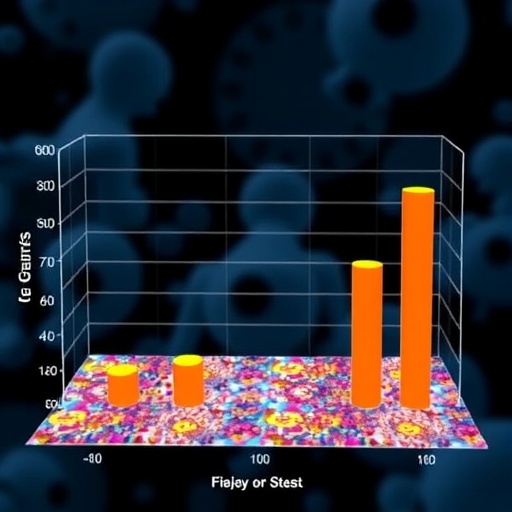In a groundbreaking investigation presented at the Anesthesiology 2025 annual meeting and published in the prestigious journal JAMA, researchers explored the clinical implications of intraoperative blood pressure management on long-term functional outcomes. This rigorous study focused on whether tailoring mean arterial pressure (MAP) goals during surgery, stratified according to patients’ individualized risk of hypotension, could influence recovery trajectories six months postoperatively.
Blood pressure management during surgery is a critical facet of anesthetic practice, primarily because fluctuations in blood pressure can lead to ischemic complications, organ dysfunction, or adverse neurological events. Traditionally, anesthesiologists have employed standard protocols to maintain stable intraoperative hemodynamics, yet these approaches often neglect individual patient variability and risk profiles. The premise of this investigation was to challenge the one-size-fits-all paradigm by introducing personalized MAP targets aligned with the patient’s susceptibility to hypotensive episodes.
The study meticulously categorized patients into risk strata based on preoperative assessments and intraoperative monitoring parameters, adjusting the blood pressure management goals accordingly. This stratification intended to mitigate the negative sequelae of both sustained hypotension and unnecessary hypertension, aiming for an optimized balance that could safeguard end-organ perfusion without exposing patients to the dangers of excessive vasopressor use or fluid overload.
Despite this well-conceived strategy and technological advancements in continuous hemodynamic monitoring, the study’s outcomes revealed no significant difference in functional disability measured six months after surgery between the risk-stratified blood pressure management group and the control group undergoing standard intraoperative care. Functional disability was assessed using validated metrics designed to capture meaningful impairments in daily living activities, cognitive function, and physical independence, underscoring the comprehensive nature of the follow-up.
These findings bear crucial clinical ramifications. They suggest that, contrary to some contemporary hypotheses, the complex and resource-intensive practice of individualized intraoperative blood pressure management based on hypotension risk may not translate into improved long-term functional outcomes for surgical patients. Instead, this highlights the robustness of current standard protocols and raises questions about the cost-effectiveness and clinical utility of highly tailored hemodynamic interventions.
Throughout the study, advanced statistical models controlled for confounding variables such as patient demographics, comorbid conditions including hypertension and cardiovascular disease, type and duration of surgery, and anesthesia techniques employed. This rigorous approach provides confidence that the lack of observed benefit in the intervention group is not attributable to methodological shortcomings but rather reflects a true clinical phenomenon.
Furthermore, the research team engaged state-of-the-art intraoperative monitoring tools, including continuous arterial line measurements and cerebral oximetry, enabling meticulous monitoring of tissue perfusion and oxygenation. These tools underpinned the stratification model and served as safety checkpoints to prevent extreme deviations from targeted blood pressure ranges.
While the results may temper enthusiasm for personalized intraoperative MAP goal-setting based on hypotension risk, they open avenues for further inquiry. For instance, future studies may investigate alternative hemodynamic parameters or composite indices that better predict postoperative functional outcomes. Additionally, subgroup analyses could reveal patient populations that might still benefit from customized approaches, such as those with pre-existing cerebrovascular disease or frailty syndromes.
It is imperative to contextualize these findings within the broader literature on perioperative hemodynamics, which contains heterogeneous data regarding the impact of blood pressure variability on surgical outcomes. The current study contributes valuable evidence that challenges the paradigm of individualized MAP management as a panacea, urging clinicians and researchers to refine risk models and explore adjunct strategies including pharmacologic optimization and enhanced postoperative care pathways.
The corresponding author, Dr. Matthijs Kant, from the University Medical Center Utrecht, has emphasized the importance of cautious interpretation and the need for multi-institutional collaborations to validate these findings across diverse patient populations and surgical contexts. Such efforts will be critical to developing evidence-based guidelines that balance innovation with pragmatic clinical benefit.
In summation, this comprehensive analysis underscores the complexity of managing intraoperative hemodynamics and the necessity of evidence-driven practice changes. Rather than revolutionizing blood pressure targets during surgery, the study advocates for adherence to current guidelines while encouraging continuous research into patient-specific perioperative care enhancement.
This research has been disseminated by JAMA Network Media Relations and is accessible online, providing an invaluable resource for anesthesiologists, surgeons, and clinical researchers committed to optimizing surgical outcomes through precision medicine.
Subject of Research: Intraoperative blood pressure management strategies and their impact on postoperative functional disability.
Article Title: Not specified in the provided content.
News Publication Date: Not specified in the provided content.
Web References: doi:10.1001/jama.2025.18007
References: Not specified in the provided content.
Image Credits: Not specified in the provided content.
Keywords: Hypertension, Medical treatments, Surgery, Blood pressure, Risk factors
Tags: blood pressure fluctuations in surgerycomplications of hypotension during anesthesiaindividualized risk assessment in anesthesiaintraoperative hemodynamics optimizationJAMA publication on anesthesia researchlong-term functional outcomes after surgerymean arterial pressure goalsminimizing ischemic complications in surgerypatient stratification for hypotension riskpersonalized anesthetic strategiesproactive blood pressure management in surgeryreactive approaches to hypotension





